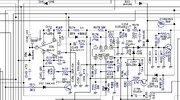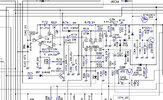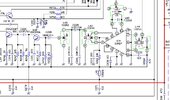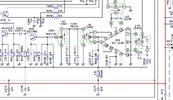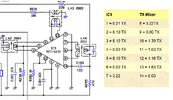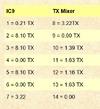Anyone out there have a semi voltage chart for this radio? I have only found one for the bipolar version. Also, this radio has the RCI mixer, which seems to differ from the Siemens. I could use a datasheet on this as well.
This all started when I got this radio and started to un-screwdriver it, as well as a few other things that needed to be repaired. All was going well, until I tried to expand the range of the clarifier. That resulted in a fire in the clarifier, smoking the clarifier control. I did make some circuit changes and cleaned up the mods. I have since returned the radio back to stock now and I have no RF output. It isn't the usual suspects.
I have low level signal (a few mW) on the service monitor. I have AM mod, but am not sure, but believe I don't hear SSB mod. I have RX.
I have checked: There is bias, the FET's test good, the pre-driver is good, the shorting bar is in place and good, Q54 is testing good. The TX/RX LED does switch. I have 8-9V on TX and RX.
I guess my head is spinning from this one and I am missing service data, like the voltages in the PA and the datasheet on the mixer. I don't have a mixer to shotgun with, or I probably would have done it already. I have been over the soldering and possible burned traces.
Thanks,
SuperLid
This all started when I got this radio and started to un-screwdriver it, as well as a few other things that needed to be repaired. All was going well, until I tried to expand the range of the clarifier. That resulted in a fire in the clarifier, smoking the clarifier control. I did make some circuit changes and cleaned up the mods. I have since returned the radio back to stock now and I have no RF output. It isn't the usual suspects.
I have low level signal (a few mW) on the service monitor. I have AM mod, but am not sure, but believe I don't hear SSB mod. I have RX.
I have checked: There is bias, the FET's test good, the pre-driver is good, the shorting bar is in place and good, Q54 is testing good. The TX/RX LED does switch. I have 8-9V on TX and RX.
I guess my head is spinning from this one and I am missing service data, like the voltages in the PA and the datasheet on the mixer. I don't have a mixer to shotgun with, or I probably would have done it already. I have been over the soldering and possible burned traces.
Thanks,
SuperLid

